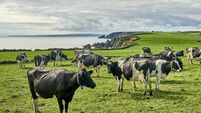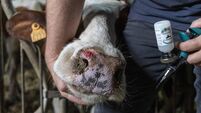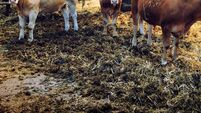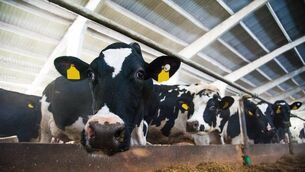Dairy profit monitor is key to success
Sometimes there is also an unacceptable difference between the prices paid to farmers by different co-ops.
Dairy Profit Monitor
The only way forward is good planning, based on proper management accounts and realistic budgeting. The best way to do this is through participation in the Teagasc dairy profit monitor scheme and associated discussions. Completing a dairy profit monitor will enable you to compare every aspect of your farming with similar farms and set realistic targets for your own farm.
Data from about 1,600 farmers who participated in the Teagasc dairy profit monitor in 2011 indicated a difference of more than 25 cent per gallon between the profitability of the average participant and the top 20%. There is a similar difference between the average and the lowest 20% — resulting in a difference of more than 50 cent per gallon between the top and lowest 20%. Of course, there is much greater difference between individual farmers.
The many aspects to maximising profit from dairying can be identified from your profit monitor. Firstly, the value of gross output in terms of milk, calves and cull cows (minus replacement costs) should be maximised. Analysis of the 1,600 Teagasc dairy profit monitors for 2011 indicates that the difference between the gross output per litre of milk between the 10% most profitable and the 10% least profitable is five cent.
This difference is largely accounted for by producing better quality milk, better calves, and healthier, well-fed animals.
The data from the 2011 profit monitor for spring calving herds show that the gross output from the top 10% was 38.5 cent/litre, while it was only 33.5 cent per litre for the low 10%, which is a €300 per cow difference at similar milk yields. But the difference per cow is much greater, because the top group have higher milk yields.
Average milk solids per cow in the 2011 profit monitor group was 386 kg, while the top 10% had 400 kg per cow, and the cows in the low 10% produced 366 kg.
There is a huge difference in variable costs between the top and low profit monitor groups, particularly regarding feed and veterinary expenses. The low group had a much lower stocking rate (1.77 livestock units/ha versus 2.14 LU/ha), and used almost double the amount of purchased concentrates compared to the top 10%.
No doubt, some of these differences may be due to land type, but grassland management is also a major factor in the difference. At 14c/l, the veterinary expenses of the low group were 50% higher per litre than the top group.
In 2011, the net profit margin (return to labour, land and capital) averaged 15.2 cent per litre, while the top 10% averaged 22.6 cent per litre, and the low 10% averaged only 6.3 cent per litre. A close examination of individual circumstances usually helps to identify the reasons for these massive differences.
The main reason for such a poor margin for the low 10% is that they had huge costs, both variable and fixed, totalling 22.7 cent per litre. As regard variable costs, they are greatly influenced by animal health and grass utilisation. Fixed costs comparisons can sometimes be misleading because of vast differences in depreciation, leases, interest payments and labour costs, which are often due to the stage of farm development.
First Step
The first step in improving income is to have a dairy profit monitor completed for your farm. With any reasonable set of accounts for 2012, a profit monitor can be prepared, and analysed by Teagasc. Even if the 2012 accounts are unlikely to make attractive viewing, they are still extremely useful for identifying areas where improvements can be made.
It may not be easy to bring about significant improvements — but having a monitor analysis available will help identify priority areas. The improvements that farmers can make depend on where they are starting from.
Profit monitor forms can be got at all Teagasc offices, and you should start filling in the necessary documentation throughout the year, and assessing your performance compared to your budget/plan (which every farmer should have). Teagasc also strongly advises farmers to use their cost control planner to monitor events throughout the year and make adjustments where necessary.









